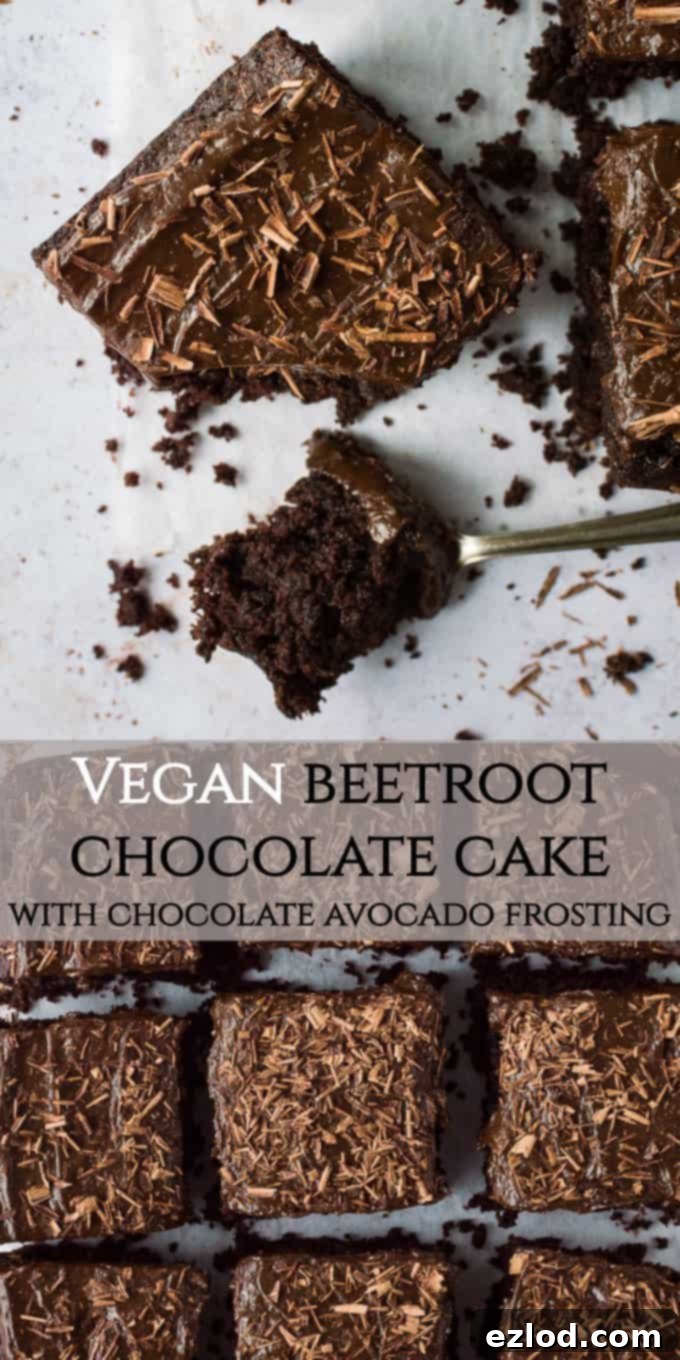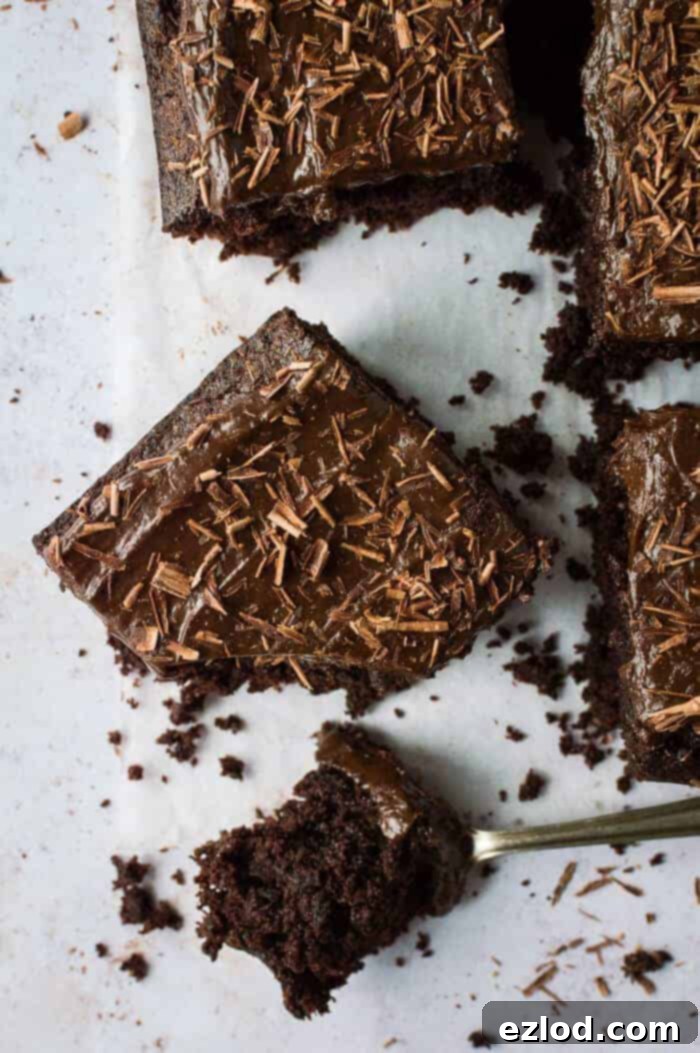Indulge in the Best Vegan Beetroot Chocolate Cake with Creamy Avocado Frosting
Experience the ultimate moist, fudgy chocolate cake with a delightful secret ingredient – beetroot! Paired with a luscious, creamy chocolate avocado frosting, this vegan treat is a surprisingly wholesome indulgence that’s a little bit better for you.
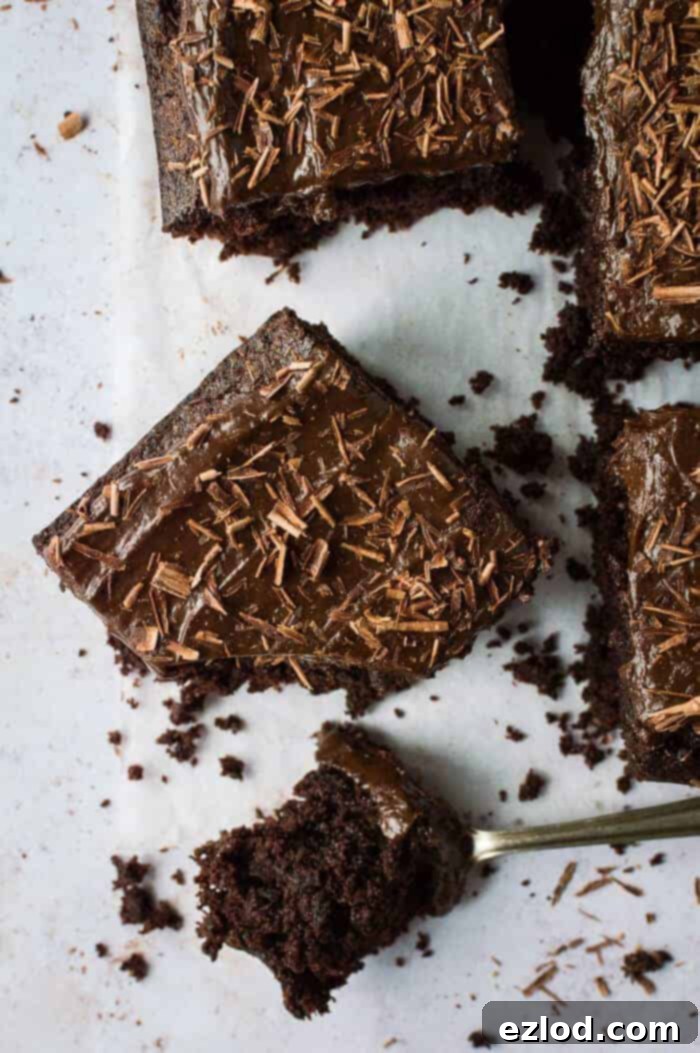
Prepare to be amazed by this incredible vegan beetroot chocolate cake, generously crowned with a velvety chocolate avocado frosting. It’s so rich, decadent, and profoundly fudgy that even the most discerning palates would never suspect it harbors a secret ingredient: nutritious beetroot! This recipe redefines indulgence, proving that plant-based desserts can be utterly irresistible and surprisingly wholesome.
The magic of beetroot goes beyond just adding a beautiful hue; it’s the hidden hero responsible for the cake’s exceptionally soft and moist texture. Beetroot naturally contains moisture and sugars, which contribute to a wonderfully tender crumb that melts in your mouth. While this makes the cake incredibly delightful, it also means it’s a touch delicate and crumbly, so handle each slice with care to preserve its perfect structure.
For those who might be hesitant about baking with beetroot, rest assured – its earthy flavor is completely undetectable in the final product. Thanks to the robust cocoa, the beetroot simply enhances the cake’s richness and moisture, creating a deep, complex chocolate flavor without any trace of vegetable taste. You’ll simply enjoy a genuinely delicious chocolate cake, elevated by a surprising and wholesome addition, making it a perfect dairy-free and egg-free dessert option.
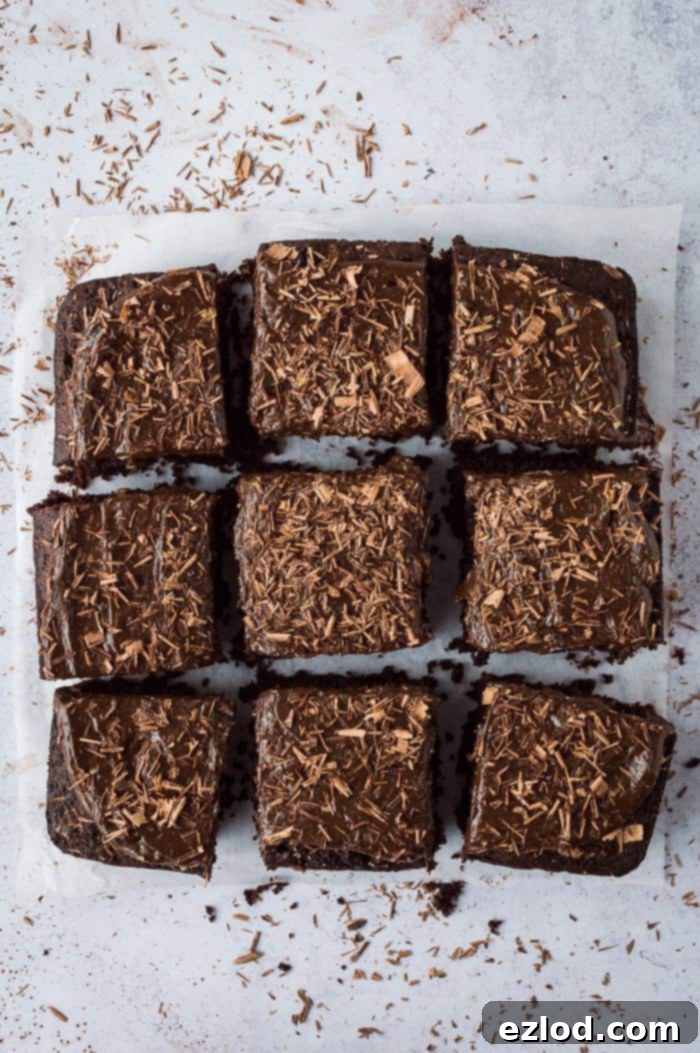
The Irresistible Chocolate Avocado Frosting: A Creamy Revelation
Now, let’s talk about the frosting – a game-changer made with ripe avocados, cocoa powder, agave nectar (or maple syrup), a hint of coconut oil, and vanilla extract. When I first considered using avocados in frosting, skepticism was my natural reaction. However, one taste was all it took to convert me! This frosting boasts an incredibly smooth, creamy, and fudgy texture that rivals any traditional buttercream, but without the dairy.
While I can discern a subtle hint of avocado when tasting the frosting on its own, its flavor is never overpowering or off-putting. The true magic happens when this luscious frosting is paired with the intensely chocolatey cake. The deep cocoa notes of the cake perfectly complement the frosting, causing any trace of avocado flavor to vanish. What remains is pure, unadulterated chocolatey deliciousness, leaving you with an indulgent experience without the guilt of excessive sugar or unhealthy fats.
Avocados not only contribute to the amazing texture but also add a wealth of healthy monounsaturated fats, essential vitamins (like K, C, B6, and E), and vital minerals (like potassium and folate), making this frosting a more wholesome and nutrient-dense alternative to conventional sugar-laden toppings. It’s a testament to how creative plant-based baking can be, transforming simple ingredients into something extraordinary and secretly good for you.
Vegan Mayonnaise: The Secret to Supreme Moisture
Another unique ingredient that contributes to this cake’s exceptional moisture is vegan mayonnaise. While it might sound unusual, mayonnaise has long been a secret weapon in baking, known for adding richness and keeping cakes incredibly moist and tender. In this vegan adaptation, it works wonders, delivering a tender crumb that stays fresh for longer, mimicking the effect of eggs and oil in traditional recipes. I personally recommend brands like Vegenaise for their consistent quality and neutral flavor profile, but any good quality vegan mayonnaise will perform beautifully.
If you prefer not to use vegan mayonnaise, or can’t find it, you might be wondering about substitutions. While I haven’t personally tested it for this specific recipe, a general rule in vegan baking suggests that unsweetened apple sauce could potentially work as a replacement for some of the fat and moisture. If you decide to experiment with apple sauce, be mindful that it may alter the final texture and sweetness level slightly, so proceed with caution and perhaps in smaller batches first to adjust. Another option could be a neutral-flavored plant-based yogurt, but again, this would require testing.
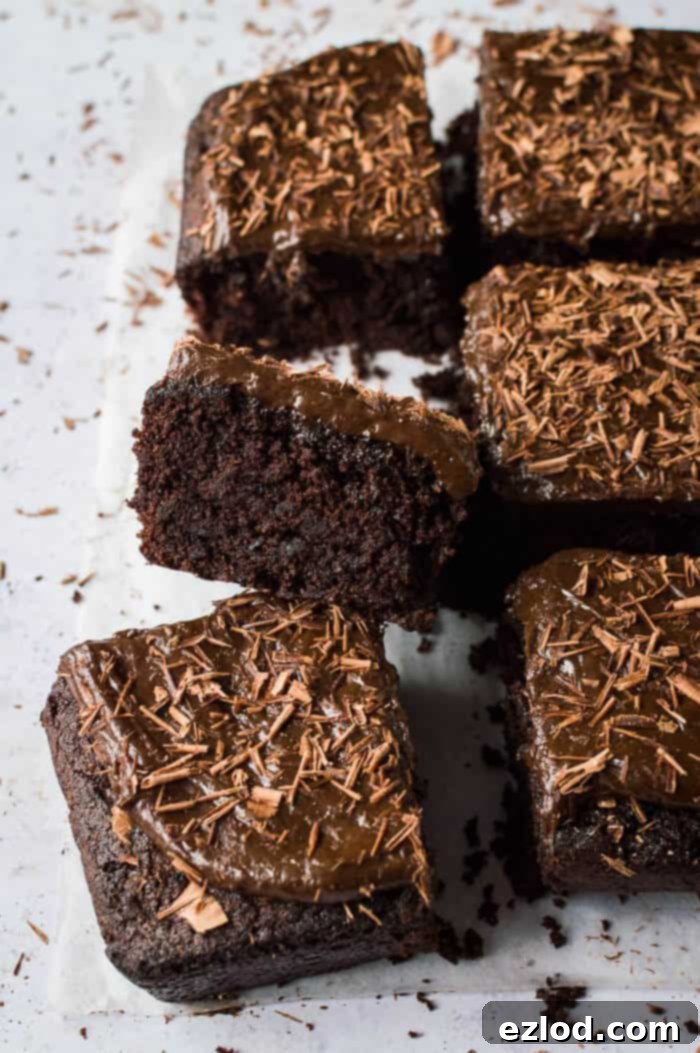
Crafting Your Vegan Beetroot Chocolate Cake: Step-by-Step Guide
(For a complete list of ingredients and detailed instructions, please refer to the comprehensive recipe card provided below.)
*Achieving the best results in baking always comes down to precision. For this reason, I strongly advise using gram measurements with a digital kitchen scale rather than relying on cup conversions. Cup measurements, while convenient, are simply not accurate enough for the delicate balance required in baking, and I cannot guarantee optimal results if they are used.*
Preparing Your Flax Egg (A Vegan Essential)
Begin by preparing your flax egg, a crucial binder in vegan baking. In a small bowl, combine one tablespoon of ground flaxseed with three tablespoons of water. Give it a quick stir to ensure the flaxseed is fully submerged and then set it aside. In just a few minutes, it will transform into a thick, gelatinous mixture, perfectly mimicking the binding properties of a traditional egg. This simple step is vital for the cake’s structure, moisture retention, and overall texture in a plant-based recipe.
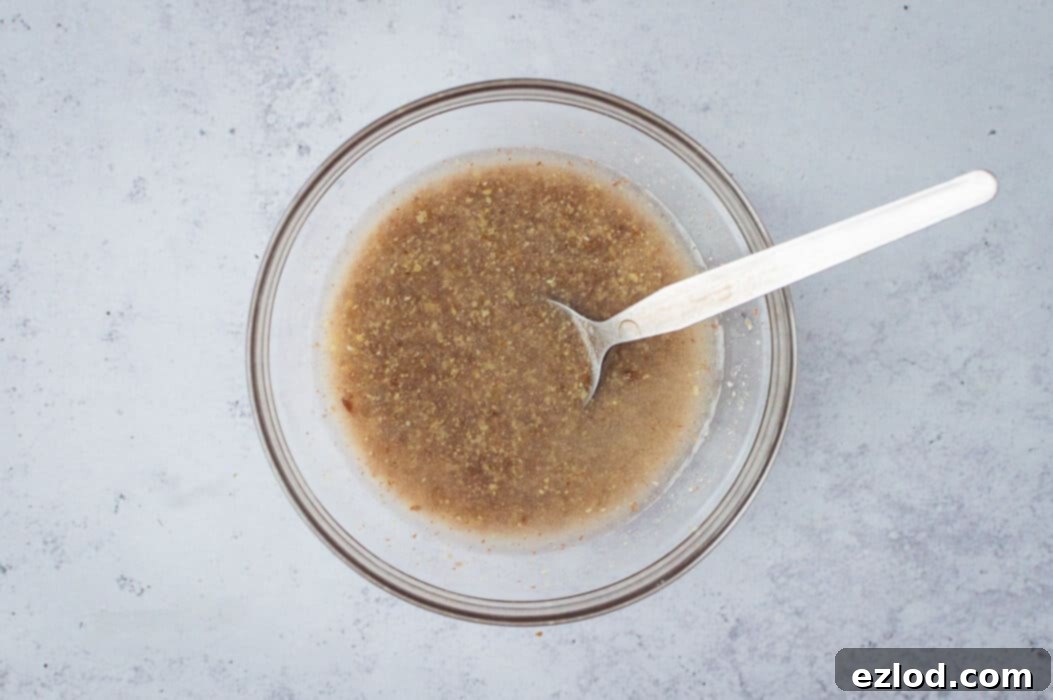
Mixing the Dry and Wet Ingredients for a Perfect Batter
In a large mixing bowl, whisk together your dry ingredients: 200g of plain flour, 50g of rich cocoa powder, 1 ½ teaspoons of bicarbonate of soda (baking soda), ¾ teaspoon of baking powder, ½ teaspoon of salt, and the optional 1 teaspoon of instant espresso powder. The espresso powder is a secret weapon for intensifying chocolate flavor without adding a coffee taste; it simply deepens the cocoa notes, making the chocolate taste even more pronounced and complex. Feel free to omit it if you prefer.
Next, introduce the wet ingredients to the dry mixture: 225g of light brown soft sugar, the star ingredient — 225g of grated cooked beetroot, 60g of vegan mayonnaise, 100ml of sunflower oil, 1 ½ teaspoons of aromatic vanilla extract, a touch of 2 teaspoons of cider vinegar (which helps activate the baking soda for rise), and your prepared flax egg. Stir everything together until all ingredients are just combined and no streaks of dry flour remain. Avoid overmixing, as this can lead to a tough cake. The batter will be noticeably thick – resist the urge to add more liquid, as this thickness is precisely what contributes to the cake’s dense, fudgy, and incredibly moist texture!
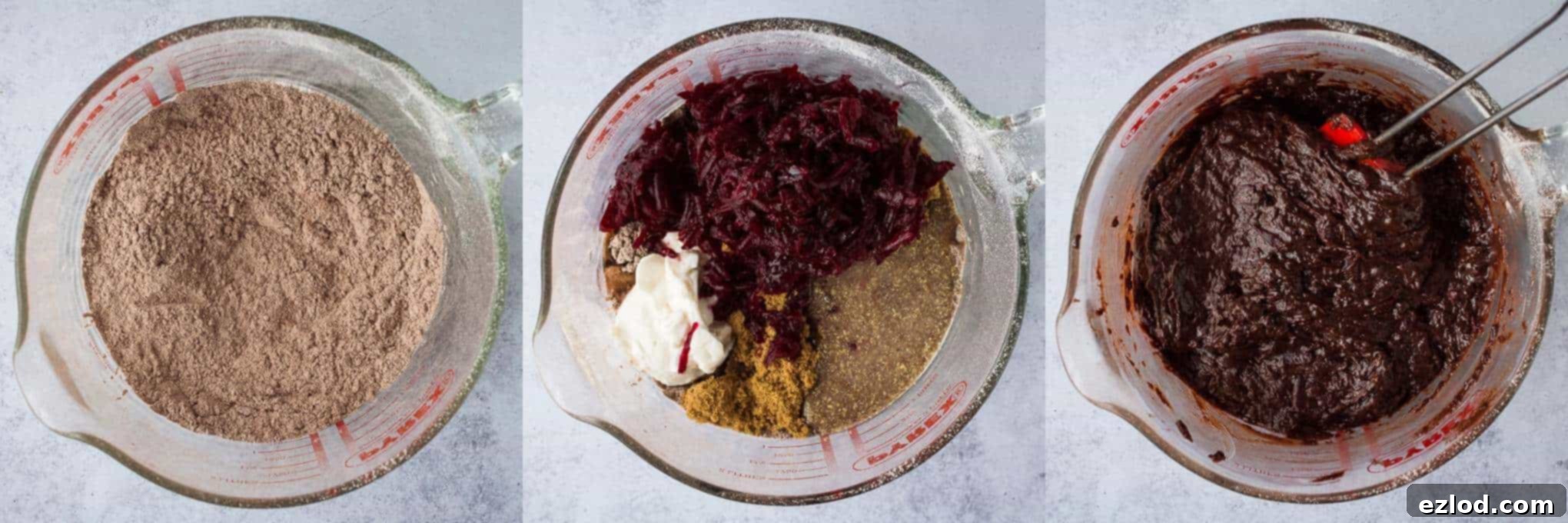
Baking and Cooling Your Delicate Creation
Carefully scrape the thick batter into a prepared 20cm/8-inch square cake tin that has been thoroughly greased and lined with baking parchment. Spread the batter evenly to ensure uniform baking and a level top. Bake in your preheated oven for approximately 35-45 minutes. You’ll know it’s ready when a skewer inserted into the very center comes out clean or with just a few moist crumbs attached, but no wet batter. Don’t be alarmed if the center dips slightly after baking; this is a common and normal characteristic of this delicate cake, contributing to its fudgy texture.
Given the cake’s tender nature, proper cooling is absolutely essential to prevent it from breaking or crumbling upon removal. Allow it to cool in the tin for a minimum of 20 minutes before carefully inverting it onto a wire rack. Let it cool completely to room temperature before attempting to frost it. Attempting to frost a warm cake will only result in melted frosting and a messy situation. Patience during this stage will be rewarded with a perfectly intact and delicious cake, ready for its luscious topping.
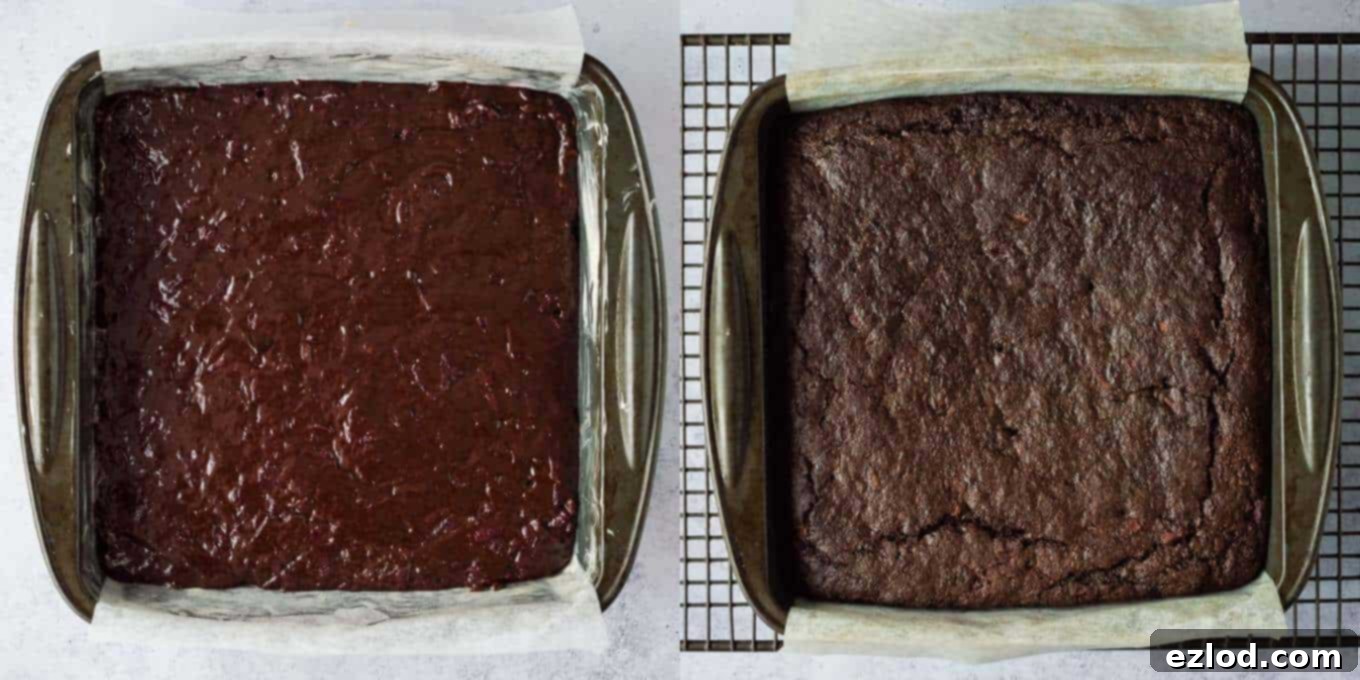
Mastering the Chocolate Avocado Frosting
To create the perfect chocolate avocado frosting, selecting the right avocados is paramount. They should be very soft and ripe – the kind that yields easily to gentle pressure – but crucially, not so ripe that the flesh has begun to blacken or develop brown spots. Perfectly ripe avocados will yield the creamiest, smoothest frosting texture, free of any stringiness.
Carefully scoop the ripe avocado flesh into a food processor. Add the 5 tablespoons of sifted cocoa powder, your choice of 5 tablespoons of agave or maple syrup for sweetness, 3 tablespoons of melted coconut oil (which helps with setting and texture as it cools), and a generous 1 tablespoon of vanilla extract for depth of flavor.
Process these ingredients on high speed until the mixture is incredibly smooth. This might take a few minutes. Periodically stop the food processor to scrape down the sides of the bowl, ensuring all ingredients are fully incorporated and no lumps remain. Continue blending until the frosting is exceptionally smooth, creamy, and possesses a beautiful glossy sheen. Patience here is key to achieving that perfect, luxurious, spreadable texture.
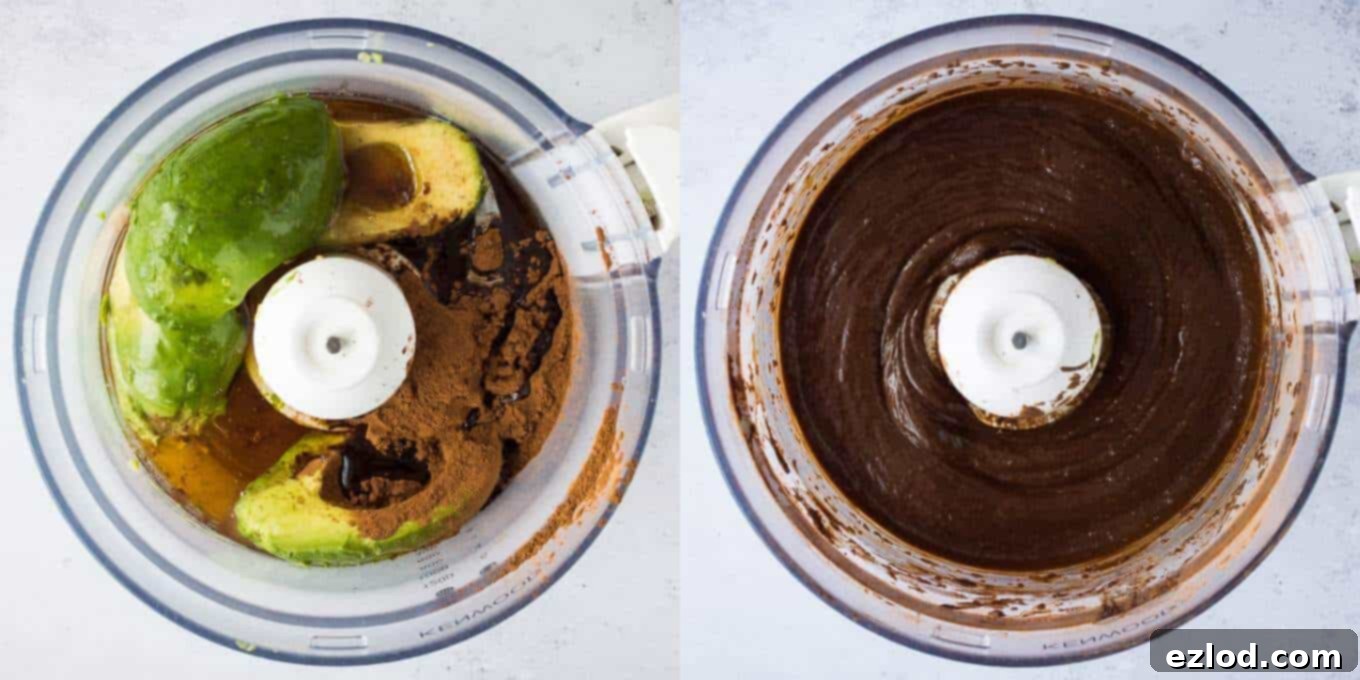
If you don’t own a food processor, a stick blender (immersion blender) or a high-speed blender might also work, though it may require a bit more effort and time, and you might need to add a tiny splash of plant milk to help it blend if it’s too thick. Once your cake is completely cool, transfer it to a serving board. Generously spread the velvety chocolate avocado frosting over the top. For an extra touch of elegance and chocolatey goodness, sprinkle with chocolate shavings if desired. Then, slice and serve this delightful creation!
Due to its creamy, somewhat soft consistency, this frosting is ideally suited for a single-layer cake like this one. While it might not hold up as well for intricate layer cake designs or piping, it is absolutely perfect for a delicious, easy-to-spread topping that perfectly complements the rich cake beneath, offering a decadent yet lighter feel.
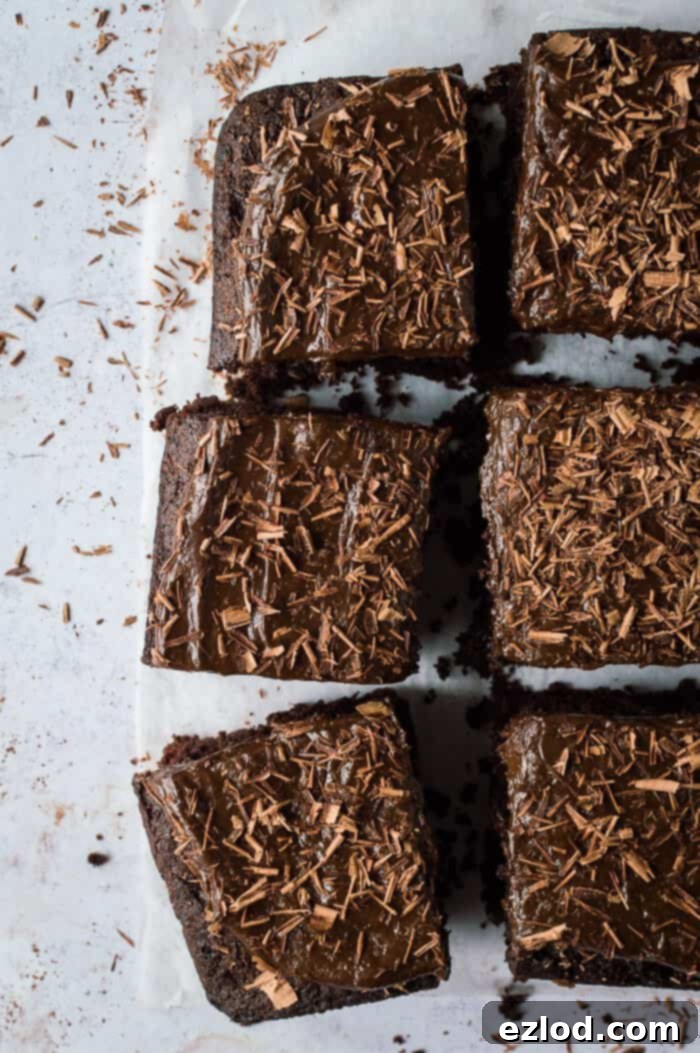
Prepping Your Beetroot: Store-Bought vs. Homemade
For ultimate convenience and to save time, I often use precooked beetroot in this vegan chocolate beetroot cake recipe. The vacuum-packed variety, readily available in most supermarkets, is perfect. Just be sure to carefully check the label to ensure it’s unflavored and doesn’t contain any added vinegar, as these could unexpectedly alter the cake’s delicate flavor profile and texture.
If you prefer to cook your own beetroot from scratch, it’s a straightforward process that yields wonderfully fresh results. You’ll need approximately two large or three medium beetroots. Begin by thoroughly scrubbing them clean under running water. Wrap each beetroot individually in tin foil to create a small, sealed packet. Place these foil-wrapped beetroots on a baking tray and roast in a preheated oven at 200°C (400°F/Gas Mark 6) for about 30 minutes to an hour, depending on their size. They are perfectly cooked when a knife or skewer can easily slide into their center with little resistance.
Once cooked, allow them to cool until they are comfortable enough to handle. The skin should then scrape off easily using the back of a knife or your fingers; you might even find they peel effortlessly. Once peeled, they are ready to be grated using a box grater or food processor and incorporated into your cake batter, adding that wonderful moisture, natural sweetness, and vibrant color.
Storage and Freezing Guidelines for Optimal Freshness
The vegan beetroot chocolate cake itself is quite robust and will maintain its deliciousness for up to five days when stored properly in an airtight container at room temperature. The deep moisture from the beetroot helps to keep it fresh. However, the chocolate avocado frosting, due to its fresh avocado content, is best enjoyed on the day it’s made for peak freshness, texture, and color. Avocados can oxidize and turn brown when exposed to air over time, even when blended.
If you’re planning ahead or entertaining, you can certainly bake the cake a day or two in advance. Once baked and completely cooled, store the unfrosted cake in an airtight container at room temperature. Then, prepare the frosting and assemble the cake on the very day you intend to serve it. This method ensures the frosting is at its creamy best and vibrantly colored.
Should you find yourself with any delicious leftovers (cake and frosting combined), they can be stored in the refrigerator for approximately two to three days at most. Be sure to keep them in an airtight container to prevent drying out, absorb unwanted fridge odors, and minimize the frosting’s exposure to air.
Can You Freeze This Vegan Chocolate Cake? Absolutely!
Yes, this cake is remarkably freezer-friendly! Any leftover cake, complete with its indulgent chocolate avocado frosting, can be frozen for up to two months without significant loss of quality. To freeze, wrap individual slices or the entire unfrosted cake tightly in plastic wrap, ensuring no air pockets. Then, place the wrapped cake or slices in an airtight freezer-safe container or a heavy-duty freezer bag. This double layer of protection helps prevent freezer burn.
When you’re ready to enjoy a slice, simply remove it from the freezer and allow it to defrost at room temperature for a few hours before serving. If you froze the whole cake, it might take overnight to thaw in the refrigerator, or several hours at room temperature. It will retain much of its original moisture and flavor, making it a perfect make-ahead treat for unexpected guests or whenever a chocolate craving strikes.
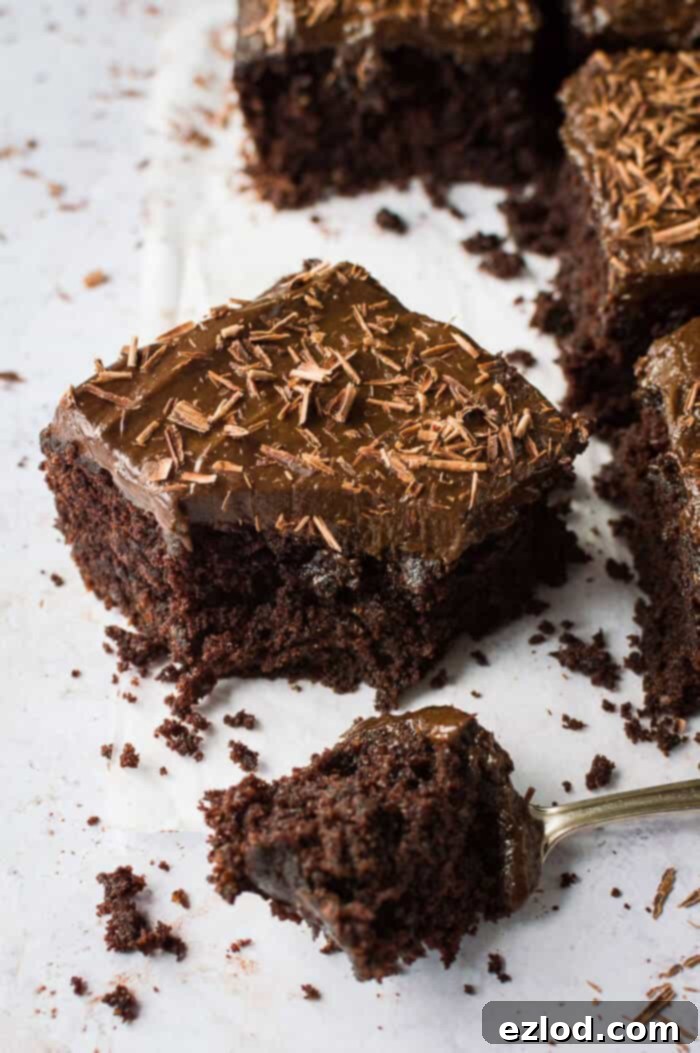
Explore More Delicious Vegan Cakes Featuring Fruits and Vegetables!
If you enjoyed the innovative use of beetroot in this recipe, you’ll love these other plant-based cake creations that cleverly incorporate fruits and vegetables for added flavor, moisture, and nutrition:
- Vegan Pumpkin Cake with Maple Pecans and Cinnamon Buttercream
- Delightful Vegan Apple Bundt Cake
- Wholesome Vegan Sweet Potato Loaf Cake with Pecan Streusel
- Classic Vegan Banana Cake with Rich Chocolate Peanut Butter Frosting
If you’ve tried this delightful recipe, we’d love to see your creations! Share your photos on Instagram and tag @domestic_gothess, using the hashtag #domesticgothess
*All images and content on Domestic Gothess are copyright protected. If you wish to share this recipe, please do so by utilizing the provided share buttons. Reproduction of the full recipe or content, including screenshots, is strictly prohibited.*

Vegan chocolate beetroot cake with chocolate avocado frosting
Ingredients
Vegan Beetroot Chocolate Cake:
- 1 Tbsp ground flax seed
- 3 Tbsp water
- 200 g (1 + ⅔ cup) plain (all-purpose) flour
- 50 g (7 Tbsp) cocoa powder
- 1 ½ tsp bicarbonate of soda (baking soda)
- ¾ tsp baking powder
- 1 tsp instant espresso powder (optional)
- ½ tsp salt
- 225 g (1 ¼ cups) light brown soft sugar
- 225 g (8oz) grated cooked beetroot
- 60 g (¼ cup) vegan mayonnaise
- 100 ml (⅓ cup + 1 Tbsp + 1 tsp) sunflower oil
- 2 tsp cider vinegar
- 1 ½ tsp vanilla extract
Chocolate Avocado Frosting:
- 2 medium ripe avocados
- 5 Tbsp cocoa powder sifted
- 5 Tbsp agave nectar/maple syrup
- 3 Tbsp melted coconut oil
- 1 Tbsp vanilla extract
Instructions
-
Preheat your oven to 180°C (350°F/Gas Mark 4). Prepare a 20cm/8-inch square cake tin by greasing it thoroughly and lining it with baking parchment for easy removal.
-
In a small bowl, combine the ground flaxseed with water. Stir well and set aside for a few minutes to allow it to thicken into a ‘flax egg’.
-
In a large mixing bowl, whisk together the plain flour, cocoa powder, bicarbonate of soda, baking powder, salt, and optional instant espresso powder until thoroughly combined.
-
To the dry ingredients, add the light brown soft sugar, grated cooked beetroot, vegan mayonnaise, sunflower oil, vanilla extract, cider vinegar, and the thickened flax egg mixture. Stir everything gently until just combined into a thick batter. Do not overmix, and resist adding more liquid; the batter’s thickness is intentional for a fudgy cake.
-
Transfer the batter into your prepared cake tin, spreading it evenly to level the surface. Bake in the preheated oven for 35-45 minutes, or until a skewer inserted into the center comes out clean or with only a few moist crumbs attached. A slight dip in the center is perfectly normal.
-
This cake is very delicate. Allow it to cool in the tin for at least 20 minutes before carefully turning it out onto a wire rack to cool completely to room temperature.
-
For the chocolate avocado frosting, place the very ripe (but not discolored) avocados into a food processor. Add the sifted cocoa powder, agave or maple syrup, melted coconut oil, and vanilla extract.
-
Blend the mixture until it becomes completely smooth. Stop and scrape down the sides of the food processor bowl as needed, then continue blending until the frosting is exceptionally smooth, creamy, and glossy. This may require a bit of patience.
-
Once the cake is fully cooled, place it on a serving board. Evenly spread the luscious chocolate avocado frosting over the top. Garnish with chocolate shavings if you desire, then slice and serve immediately for the best experience.
